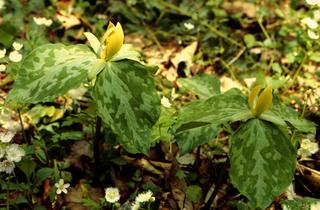References
Case, Jr., Frederick W. and Roberta B. Case. 1997. Trilliums. Timber Press Inc. Portland, Oregon. (This reference contains an identification key.)
Coffman, John Edwin and Teresa A. Sullivan. "United States." The World Book Encyclopedia. Vol.20, p.66-67. Chicago: World Book Inc., 1986.
Coleman, Kenneth, J. Minter Jr., and M. Prutny Jr. "Georgia." The World Book Encyclopedia. Vol.8, p.125. Chicago: World Book Inc., 1986.
Cunningham, James A. and John E. Klimas. 1974. Wildflowers of Eastern America. Alfred A. Knopf: New York.
Grimm, William Carey. 1993. The Illustrated Book of Wildflowers and Shrubs. Stackpole Books: Pennsylvania.
Kubitzi, K., H. Hoover, P.J. Rudall, P. S. Stevens, and T. Stuzel. 1998. The Families and Genera of Vascular Plants. Springer-Verlag Berlin Heidelberg:
New York.
Niering, William A. and Nancy C. Olmstead. 1979. The Audubon Society Field Guide to North America. Alfred A. Knopf: New York.
Radford, Albert E., H. E. Ahles, and E. R. Bell. 1968. Manual of the Vascular Flora of the Carolinas. The University of North Carolina Press: Chapel Hill. (This reference contains an identification key.)
Rickett, Harold William. 1966. Wild Flowers of the United States. McGraw-Hill Book Company: New York.
Wofford, B. Eugene. 1989. Guide to the Vascular Plants of the Blue Ridge. The University of Georgia Press: Athens, GA.
Common Names Reference 1
Common Names Reference 2
Higher Taxa Reference
Description Reference
Natural History Reference 1
Natural History Reference 2
Return to Table of Contents
